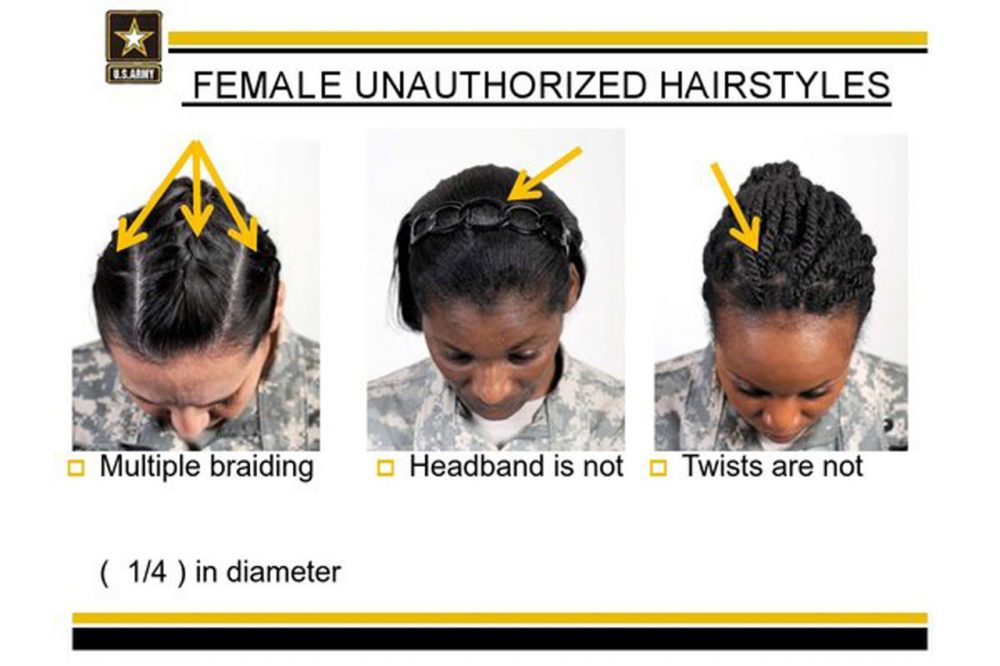Advertisement
Do U.S. Army Hair Rules Pose Health Problems For Black Women?
Resume
The United States Army has many rules — including about what Army personnel can wear. No tinted contact lenses, no ankle bracelets, no big jewelry and one earring per ear. This spring, the army released an updated "appearance and grooming policy," with new rules about hair.
The policy states that if you're in the Army, you can't wear thick braids, most corn-rows, or dreadlocks.
The new regulations touched a nerve among those who believe it unfairly targets African-American women. The Defense Department is now reviewing the regulations.
Two medical professionals at Brigham and Women's Hospital in Boston say there are big issues at stake here, beyond the military dictates.
They argue that pressure on African-American women, in particular, to look a certain way, are bad for the culture — and bad for health.
Guests
Tamarra James-Todd, associate epidemiologist and instructor in medicine at Brigham and Women's Hospital.
Therese Fitzgerald, director of the Women's Health Policy and Advocacy program at the Connors Center at Brigham and Women's Hospital. She tweets @tclfitz.
More
CommonHealth: Caution: ‘Acceptable’ Black Women’s Hairstyles May Harm Health
- "Perhaps most disturbing is the growing evidence that the process involved in straightening curly hair and maintaining acceptable hairstyles is harmful to women’s health, disproportionately affecting black women and making the pervasive practice of banning 'black' hair styles a major health equity issue."
The New York Times: When Black Hair Is Against The Rules
- "fter Emancipation, straight hair continued to be the required look for access to social and professional opportunities. Most black people internalized the idea that their natural hair was unacceptable, and by the early 20th century wore it in straightened styles often achieved with dangerous chemical processes or hot combs, or they wore wigs."
This segment aired on July 14, 2014.